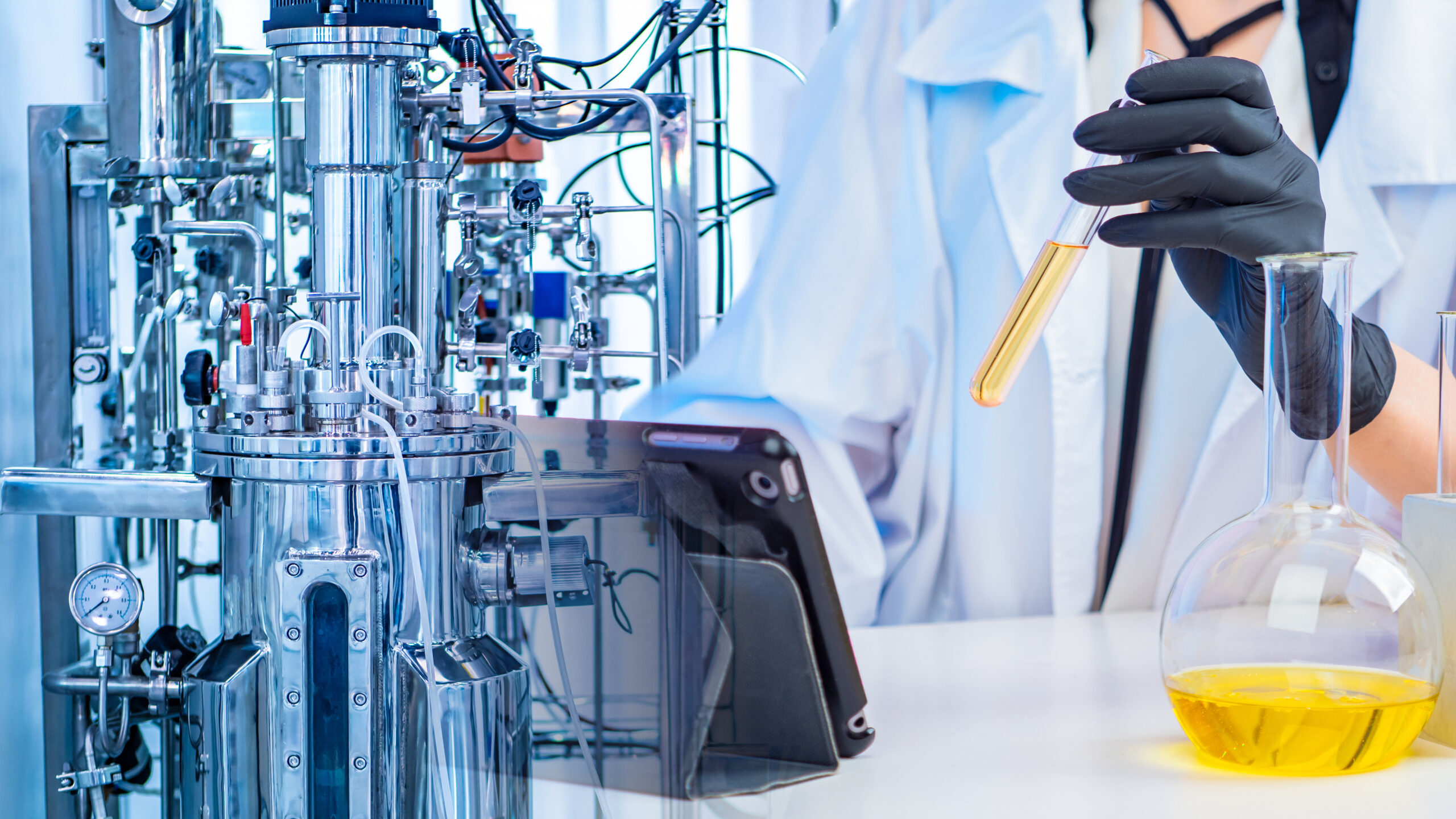Fermentation is, arguably, one of the oldest forms of biotechnology: humans have exploited the metabolic power of yeast and other naturally occurring microorganisms to produce alcoholic drinks, bread, and other fermented foodstuffs for thousands of years.1,2
Fermentation still plays a vital role in human development. Definitions of what exactly constitutes “fermentation” vary – but, broadly speaking, the term refers to any metabolic processing carried out by microbes to create products useful to humans.3 Today, industrial fermentation is used to produce a huge range of products including foodstuffs, commodity chemicals, bioethanol fuel, and agricultural feed.
Fermentation is of particular interest in pharmacology and pharmaceutical manufacturing. Not only is fermentation used to produce a range of widely used medicines (such as penicillin, cyclosporin and lovastatin); but diverse range of complex molecules produced in natural fermentation processes mean that it also plays a crucial role in drug discovery and development.
Understanding fermentation through fermentation monitoring
Fermentation monitoring is the process of identifying and quantifying compounds produced during fermentation. Fermentation monitoring is used both to track the production of compounds of interest and to monitor reaction progress. As such, fermentation monitoring is a crucial part of virtually all lab-, pilot- and plant-scale fermentation processes.
Fermentation monitoring can be carried out in two main ways: off-gas fermentation monitoring, and dissolved species fermentation monitoring.
Off-gas fermentation monitoring involves the analysis of gases and vapor species that are important to product yield – for example, O2, CO2, H2 and CH4. This type of fermentation monitoring is primarily used as a method of process monitoring, providing time- and space-averaged respiratory quotients with good response time.

Dissolved species fermentation monitoring instead looks at the concentrations of compounds of interest in aqueous/liquid form. Using multiple dissolved species probes for fermentation monitoring provides higher specificity (both spatially and chemically) than off-gas fermentation monitoring, providing insight into parameters such as stirring efficiency, aeration, and feed distribution within the reactor. Using dissolved species fermentation monitoring to measure dissolved gas levels can provide direct information on gas uptake and dissolved output rates.
Fermentation monitoring solutions from Hiden
Hiden analytical provides a full range of solutions for both off-gas fermentation monitoring and dissolved species fermentation monitoring. Hiden’s fermentation monitoring systems are suitable for fermentation vessels/bioreactors of all sizes, from lab- to plant-scale.
The QIC Biostream is a bioreactor off-gas and dissolved gas analyzer for real-time fermentation monitoring. Featuring an integrated ultra-stable 3F mass spectrometer alongside our state-of-the-art Proteus selector valve system, the QIC Biostream enables simultaneous analysis of multiple fermentation reactors via either 20, 40 or 80 inlet streams. Rapid data acquisition and low internal dead volume means switching times of under 10 seconds per stream, and our QGA Professional quantitative gas analysis software features automatic calibration routines for accurate quantitative analysis and precise fragmentation pattern recording.4
See the QIC Biostream product page for full specifications
Hiden’s QGA (quantitative gas analysis) system offers powerful mass-spectrometry-based off-gas fermentation monitoring in a compact package. Featuring a HAL 201 RC residual gas analysis mass spectrometer, the QGA offers a standard mass range of 1-200 amu while detecting over an extremely high dynamic range (100 ppb to 100%).
See the Hiden QCA product page for more information
For liquid-only analysis, Hiden’s HPR-40 DSA provides exceptionally precise performance. Capable of monitoring gas species in liquids at the sub-parts per billion (ppb) level and with a standard mass range of 200 amu for dissolved species; the HPR-40 DSA is ideal for fermentation monitoring applications
View the HPR-40 DSA product page to find out more
To learn more about the range of fermentation monitoring solutions available from Hiden Analytical, get in touch with a member of our team today.
References and Further Reading
- Craig, O. E. Prehistoric Fermentation, Delayed-Return Economies, and the Adoption of Pottery Technology. Current Anthropology 62, S233–S241 (2021).
- Kent, J. A. Industrial Fermentation: Principles, Processes, and Products. in Riegel’s Handbook of Industrial Chemistry (ed. Kent, J. A.) 963–1045 (Springer US, 2003). doi:10.1007/0-387-23816-6_24.
- Tortora, G. J., Funke, B. R. & Case, C. L. Microbiology : an introduction. (San Francisco, CA : Pearson Benjamin Cummings, 2010).
- Hiden Analytical | QIC Biostream flyer. https://www.hidenanalytical.com/wp-content/uploads/2021/06/TDS-186-1_QIC-BioStream_Flyer.pdf.

